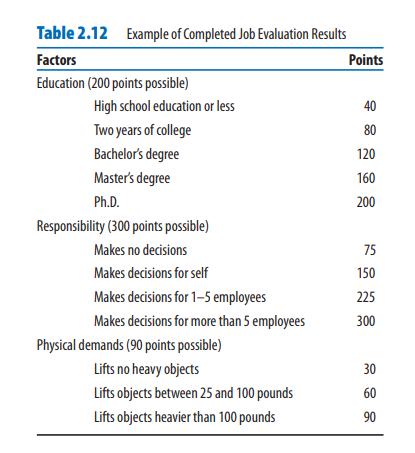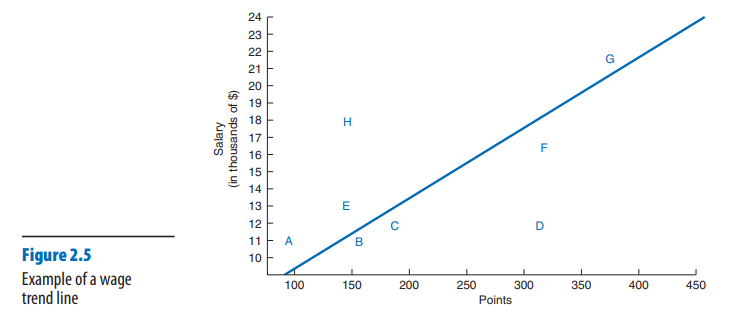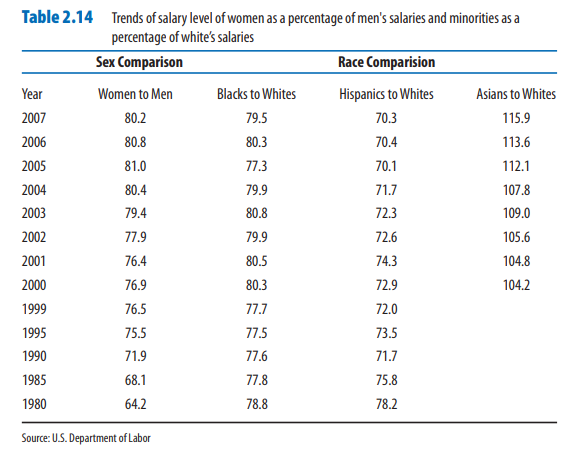Introduction
Job evaluation is a systematic and formal process used by organizations to determine the relative worth of jobs within an enterprise. It establishes the foundation for equitable wage and salary structures by evaluating job roles based on responsibilities, required skills, and contribution to organizational goals (Milkovich, Newman, & Gerhart, 2013).
According to Aamodt (2015), “the process of determining a job’s worth is called job evaluation. A job evaluation is typically done in two stages: determining internal pay equity and determining external pay equity” (p. 64). This dual focus ensures that compensation systems remain fair within the organization and competitive in the broader labor market.
Read More: Trends in Personnel Psychology
Historical Context and Importance
The concept of job evaluation gained prominence in the early 20th century as organizations grappled with industrialization and increasingly diverse job structures. Employers required systematic approaches to ensure fairness, avoid arbitrary wage setting, and comply with emerging labor standards. The Equal Pay Act of 1963 further institutionalized the importance of job evaluation by mandating equal pay for equal work, regardless of sex (U.S. Equal Employment Opportunity Commission, 1963).
Today, job evaluation remains central to human resource management. It enhances internal equity, fosters employee trust in compensation systems, and aligns pay structures with organizational strategies and workforce dynamics (Armstrong, 2006; Gomez-Mejia, Balkin, & Cardy, 2016).
Job Evaluation
At its core, job evaluation is an analytical process aimed at comparing the relative value of jobs in order to establish fair compensation systems. It is job-focused rather than person-focused, meaning that it evaluates the job and not the performance of the incumbent (Aamodt, 2015).

Result of Job Evaluation
From a theoretical perspective, job evaluation is grounded in equity theory (Adams, 1965), which asserts that employees are motivated when they perceive fairness in reward distribution. By systematically analyzing job content and compensable factors, organizations can demonstrate that compensation decisions are based on legitimate, job-related criteria rather than favoritism or bias (Cascio, 2010).
Determining Internal Pay Equity
Internal pay equity refers to fairness in pay among jobs within the same organization. Job evaluation helps determine this by ranking, classifying, or assigning point values to jobs according to compensable factors such as skill, effort, responsibility, and working conditions (Armstrong, 2006).
For instance, the point-factor method assigns numerical values to compensable factors, creating a structured hierarchy of job worth. This prevents inequities—such as paying a clerical position the same as a supervisory role—while reinforcing fairness and transparency (Milkovich et al., 2013). Internal equity not only clarifies pay relationships but also enhances trust and morale.
Determining External Pay Equity
While internal equity ensures fairness within an organization, external pay equity ensures competitiveness with the labor market. Organizations use market surveys, benchmarking, and compensation databases to align pay structures with industry norms (Cascio & Aguinis, 2018).

Wage Trend Line
External equity is crucial for recruitment and retention. Skilled employees are likely to leave if competitors offer significantly higher compensation for similar roles. Therefore, balancing internal fairness with external competitiveness is essential for maintaining a motivated and stable workforce (Milkovich et al., 2013).
Determining Sex and Race Equity
Job evaluation is also critical in addressing sex and race equity. Historically, women and minority employees have faced systemic pay disparities. By focusing on compensable factors rather than individual characteristics, job evaluation ensures that differences in pay are job-related and not discriminatory (Aamodt, 2015).

Wage and Gender
The Equal Pay Act of 1963 and Title VII of the Civil Rights Act require that compensation systems be free from gender and race discrimination (U.S. EEOC, 1963). A systematic job evaluation process supports legal compliance and aligns with contemporary organizational commitments to diversity, equity, and inclusion (Gomez-Mejia et al., 2016).
Key Methods of Job Evaluation
Job evaluation methods can be broadly categorized into non-analytical and analytical approaches. Non-analytical methods (ranking and classification) rely on general comparisons and judgment, while analytical methods (point-factor, factor comparison, Hay method) systematically evaluate compensable factors. Each method has unique strengths and limitations, making method choice critical for organizational fit.
1. Ranking Method
The ranking method is the oldest and simplest approach. Jobs are ordered from highest to lowest value based on overall importance to the organization (Gomez-Mejia, Balkin, & Cardy, 2016). Evaluation committees or HR experts make these comparisons holistically, often considering responsibility, complexity, and contribution.
- Advantages: Easy, inexpensive, and quick to implement. Best suited for small organizations with relatively few job categories.
- Limitations: Lacks precision and objectivity, particularly for large or diverse organizations. It cannot quantify the magnitude of differences between jobs, leading to disputes.
- Best Use: Small businesses or early-stage organizations with a manageable number of roles.
2. Classification/Grading Method
The classification method groups jobs into predetermined grades or classes based on descriptive criteria (Armstrong, 2006). Each class has a written definition outlining typical duties, levels of responsibility, and required qualifications. Jobs are then matched to the closest fitting grade.
- Advantages: Provides structure and is especially useful in public-sector or unionized organizations where transparency is critical.
- Limitations: Job descriptions must be detailed and up-to-date, or misclassification may occur. It may also oversimplify unique jobs.
- Best Use: Government and educational institutions where standardization and consistency are prioritized.
3. Point-Factor Method
The point-factor method is one of the most widely used because it provides analytical rigor and legal defensibility. Jobs are evaluated against compensable factors—such as skills, effort, responsibility, and working conditions. Each factor is divided into degrees, assigned point values, and summed for a total job score (Milkovich et al., 2013).
- Advantages: Objective, transparent, and allows for quantitative comparisons across jobs. It facilitates internal equity and reduces bias.
- Limitations: Time-consuming to design and implement, requiring significant HR expertise.
- Best Use: Large organizations with diverse roles and a need for precision in pay structures.
4. Factor Comparison Method
The factor comparison method combines qualitative and quantitative approaches. Key benchmark jobs are first selected and assigned monetary values for each compensable factor. Other jobs are then compared against benchmarks to determine their worth (Gomez-Mejia et al., 2016).
- Advantages: Produces a clear pay structure that integrates both internal and external equity.
- Limitations: Complex, resource-intensive, and requires regular updates to remain relevant.
- Best Use: Organizations with stable job structures and sufficient HR expertise to manage the complexity.
5. Hay Guide Chart–Profile Method
Developed by the Hay Group, this method evaluates jobs using three core dimensions:
- Know-how – The knowledge, skills, and experience required.
- Problem-Solving – The complexity of thinking and decision-making involved.
- Accountability – The degree of responsibility and impact on organizational outcomes.
These are scored with reference to guide charts, ensuring consistency across diverse roles (Armstrong, 2006).
- Advantages: Provides global consistency and is widely adopted by multinational corporations.
- Limitations: Critics argue that it overemphasizes managerial roles while undervaluing support functions.
- Best Use: Multinational firms needing a standardized framework across geographies.
6. Paired Comparison Method
In the paired comparison method, each job is compared directly with every other job in pairs. For each comparison, the more valuable job is noted. The frequency with which a job is rated “more valuable” determines its overall rank (Armstrong, 2006).
- Advantages: More systematic than simple ranking; provides clear comparisons.
- Limitations: Becomes impractical as the number of jobs grows (e.g., 20 jobs require 190 pairings).
- Best Use: Small organizations with limited job categories.
Process of Job Evaluation
The process of job evaluation is multi-staged, requiring both technical accuracy and stakeholder involvement. It typically unfolds as follows:
Step 1: Conduct Job Analysis
Job analysis provides the foundation for evaluation by gathering detailed data on job duties, responsibilities, KSAOs (knowledge, skills, abilities, and other characteristics), and working conditions (Cascio, 2010). This is accomplished through interviews, observations, questionnaires, and review of existing job descriptions. Without accurate job analysis, evaluation results will lack validity.
Step 2: Select the Evaluation Method
Organizations select a method based on strategic goals, workforce size, resources, and need for precision. For instance, public organizations may favor classification, while corporations requiring defensibility and rigor often choose point-factor (Milkovich et al., 2013).
Step 3: Identify Compensable Factors
Compensable factors are the criteria used to compare jobs, such as:
- Skill (education, training, experience)
- Effort (mental and physical demands)
- Responsibility (decision-making, supervision, financial impact)
- Working Conditions (hazards, environment, stressors)
The selection of factors should reflect organizational values and strategy (Armstrong, 2006).
Step 4: Job Rating and Evaluation
Jobs are systematically evaluated using the chosen method. For analytical methods, evaluators assign points or scores to each factor. For non-analytical methods, evaluators rank or classify jobs. Committees of HR professionals and line managers often conduct this step to reduce individual bias.
Step 5: Develop a Pay Structure
Once jobs are evaluated, results are translated into a compensation framework. Jobs with similar worth are grouped into pay grades, with salary ranges established for each grade. External market data is integrated to ensure competitiveness (Cascio & Aguinis, 2018).
Step 6: Communicate and Implement
Transparent communication is essential to minimize resistance. Employees should understand that evaluation targets the job and not the individual (Aamodt, 2015). Managers play a key role in explaining the rationale and fairness of the system.
Step 7: Review and Update
Job evaluation is not a one-time event. As roles evolve due to technological advances, restructuring, or market shifts, periodic reviews ensure continued relevance and fairness (Gomez-Mejia et al., 2016).
Organizational Impact
Job evaluation contributes to:
- Fair and Transparent Pay Systems – Enhances trust and reduces conflict.
- Motivation and Retention – Equitable pay strengthens engagement (Cascio, 2010).
- Legal Compliance – Protects organizations from litigation related to pay discrimination.
- Organizational Efficiency – Helps identify redundant roles and streamline structures (Armstrong, 2006).
Conclusion
Job evaluation is a cornerstone of modern HRM, providing organizations with a systematic approach to establishing fair, competitive, and legally defensible pay systems. As Aamodt (2015) noted, job evaluation involves determining a job’s worth through two critical stages: ensuring internal equity and ensuring external equity. In addition, effective job evaluation practices promote sex and race equity, ensuring compliance with employment law while fostering inclusion. By selecting and applying appropriate methods, organizations can design compensation structures that motivate employees, retain talent, and strengthen organizational effectiveness.
References
Aamodt, M. G. (2015). Industrial/organizational psychology: An applied approach. Cengage Learning.
Armstrong, M. (2006). A handbook of human resource management practice (10th ed.). Kogan Page.
Cascio, W. F. (2010). Managing human resources: Productivity, quality of work life, profits. McGraw-Hill Education.
Cascio, W. F., & Aguinis, H. (2018). Applied psychology in human resource management. Pearson.
Gomez-Mejia, L. R., Balkin, D. B., & Cardy, R. L. (2016). Managing human resources (8th ed.). Pearson.
Milkovich, G. T., Newman, J. M., & Gerhart, B. (2013). Compensation (11th ed.). McGraw-Hill Education.
U.S. Equal Employment Opportunity Commission. (1963). Equal Pay Act of 1963. https://www.eeoc.gov
Niwlikar, B. A. (2025, August 11). Job Evaluation and 6 Important Methods Used In It. Careershodh. https://www.careershodh.com/job-evaluation-2/
